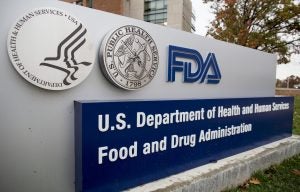
FDA has new funding to start modernizing how it assesses food chemical risks
Joanna Slaney, Sr. Director, Federal Affairs; and Tom Neltner, Senior Director, Safer Chemicals Initiative
For the first time in recent memory Congress approved funds for FDA specifically to address food safety from potentially dangerous chemicals that may present health hazards. Now it’s time for the agency to get to work.
Congress appropriated $7 million for “Emerging Chemical and Toxicology Issues” and $11 million for “Maternal and Infant Health and Nutrition” for the current fiscal year. While these numbers are below the agency requests of $19.7 million and $18 million respectively, the funds can help FDA meet its stated goals to bring on new staff and to:
- “Enhance and update its approach to chemicals—both those directly added as food ingredients and those that come into the food supply through food contact and environmental contamination” and
- Address issues of concern that include lead, cadmium, and arsenic in children’s food.
This new funding is particularly important in light of a recent Politico investigation describing years of FDA’s failure and disfunction on food safety. The article detailed an agency that has been slow to act to protect the public in numerous areas, from dangerous pathogens found in water used to grow produce to neurotoxic heavy metal contamination in baby foods. In addition, Dr. Linda Birnbaum, former director of the National Institute of Environmental Health Sciences, recently published an op-ed raising similar concerns on the agency’s failure to modernize the scientific tools it uses to conduct risk assessments for food chemicals.
In addition to approving funding to protect families from chemicals and heavy metals in food, Congress asked the agency to report on:
- Options to systematically reassess the safety of food additives and Generally Recognized as Safe (GRAS) substances, including how to: 1) set priorities for review; 2) obtain information on use; and 3) update its safety assessment methods to more effectively utilize modern scientific tools to evaluate the toxicity of and exposure to substances added to foods. The report, due in March 2023, should include resource needs, including staffing dedicated exclusively to performing reassessment.
- Upgrades to its laboratory analytical method for per- and polyfluorinated alkyl substances (PFAS) in food by expanding testing capabilities to include additional PFAS analytes and expanding the method to include additional foods. The report is due in September 2022.
While funding and reports on their own will not address the failures and dysfunctions that must be fixed, they do give management additional tools to help address some key issues facing the agency.
What will FDA do first?
In justifying its request for funds to tackle “Emerging Chemical and Toxicology Issues,” the agency acknowledged that its food safety programs and “capacity to mitigate risk due to chemical hazards across our products . . . have been falling further behind in their ability to keep pace with increasing innovation by industry and advances in science. Data gaps exist in understanding the thousands of chemicals that are contained in foods . . .”
The FDA said it would use the additional resources to:
- Address chemicals added as food ingredients and those that come into the food supply through food contact and environmental contamination; and
- “Work on issues such as: food additives and substances added to food, and chemicals used in food contact, such as phthalates.”
In justifying it’s “Maternal and Infant Health and Nutrition” funding, FDA identified key issues of concern to address:
- Toxic elements, such as lead, cadmium, arsenic, and mercury, in foods consumed by babies and young children. This work includes:
- Expanding research on the occurrence of multiple toxic elements in foods and impacts on the development of the nervous system;
- Evaluating how laboratory procedures and methods can be improved to detect levels of concern;
- Establishing reference levels for exposure to toxic elements from foods;
- Providing action levels with the expectation that, if supported by the evidence, they will decrease over time for lead, arsenic, cadmium, and mercury for different categories of foods consumed by babies and very young children;
- Premarket review of infant formula submissions to evaluate the safety and nutritional adequacy of infant formula, for which there is limited staff review capacity; and
- Nutrition work specific to infants, toddlers and pregnant and lactating women.
While the agency didn’t get their full funding request, the work cannot wait. It’s time to prioritize, hire staff, and get to work.












